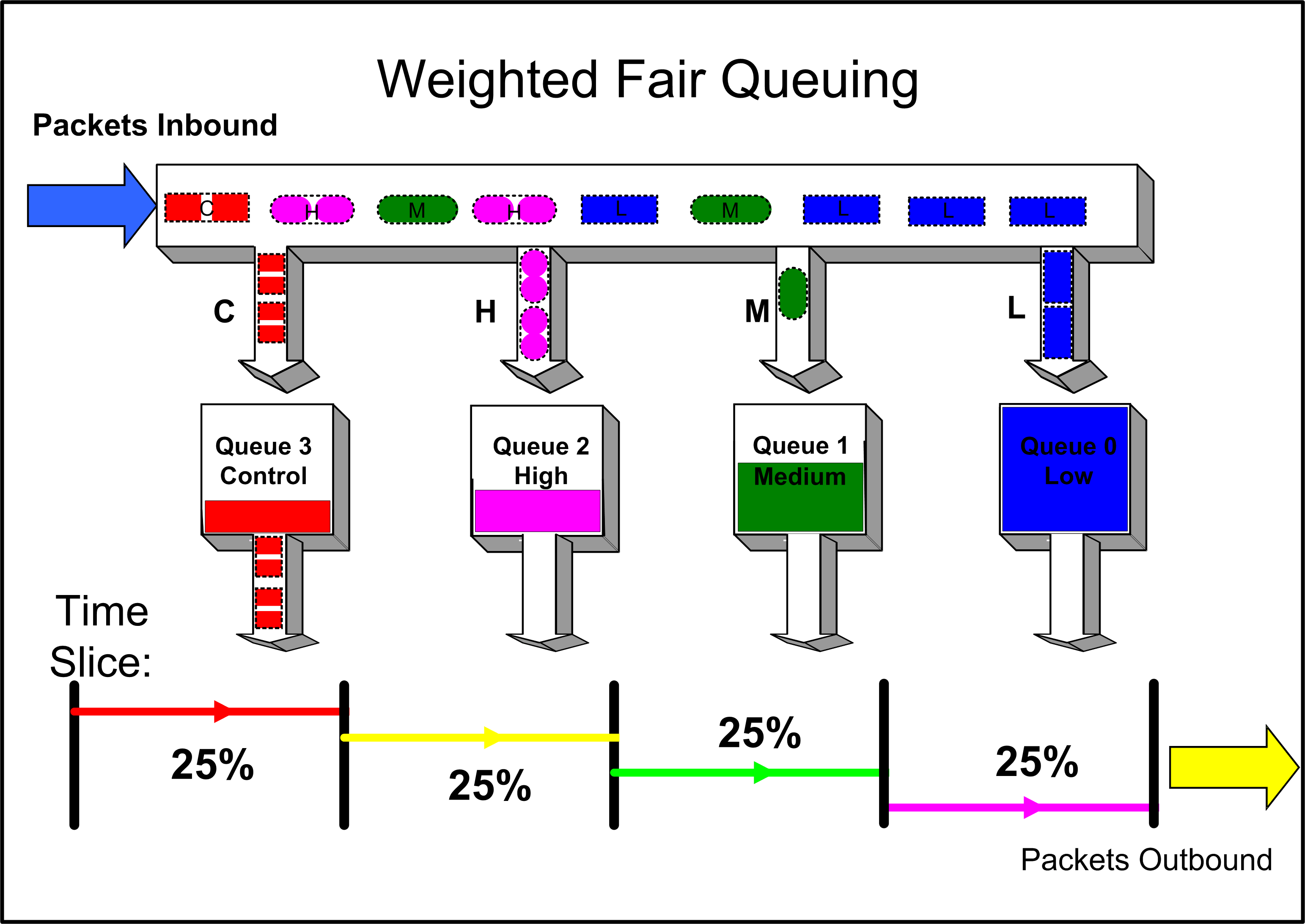With weighted fair queuing, queue access to bandwidth is divided up by percentages of the time slices available. For example, if 100 percent is divided into 64 time slices, and each queue is configured for 25 percent, each queue will get 16 time slices, after which the next lowest priority queue will get the next 16, and so on. Should a queue empty before using its current share of time slices, the next priority queue inherits the time slices that remain. Weighted Fair Queuing Packet Behavior depicts how weighted fair queuing works. Inbound packets enter on the upper left of the box and proceed to the appropriate priority queue. Outbound packets exit the queues on the lower right. Queue 3 has access to its percentage of time slices so long as there are packets in the queue. Then queue 2 has access to its percentage of time slices, and so on round robin. Weighted fair queuing assures that each queue will get at least the configured percentage of bandwidth time slices. The value of weighted fair queuing is in its assurance that no queue is starved for bandwidth. The downside of weighted fair queuing is that packets in a high priority queue, with low tolerance for delay, will wait until all other queues have used the time slices available to them before forwarding. So weighted fair queuing would not be appropriate for applications with high sensitivity to delay or jitter, such as VoIP.


 Print
this page
Print
this page Email this topic
Email this topic Feedback
Feedback